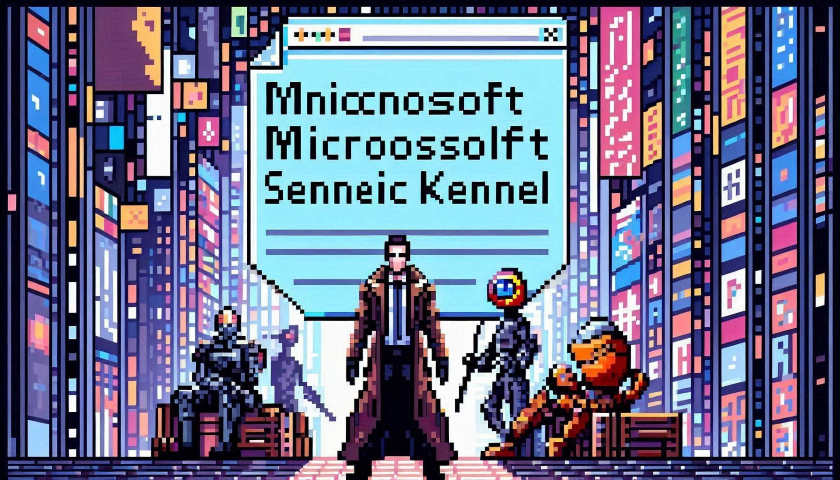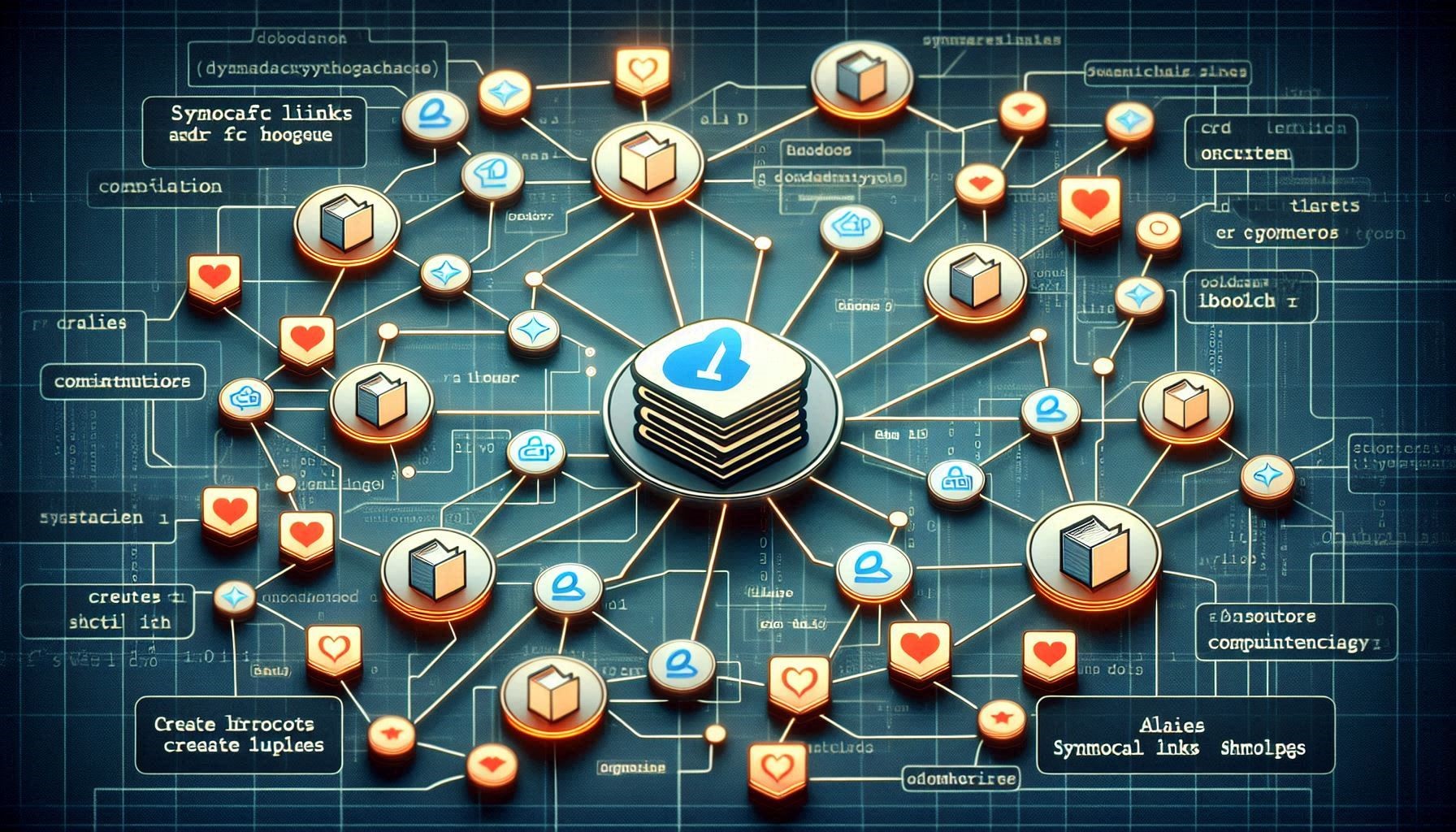
by Joche Ojeda | Apr 29, 2024 | Semantic Kernel
Welcome to the fascinating world of artificial intelligence (AI)! You’ve probably heard about AI’s incredible potential to transform our lives, from smart assistants in our homes to self-driving cars. But have you ever wondered how all these intelligent systems communicate and work together? That’s where something called “Semantic Kernel Connectors” comes in.
Imagine you’re organizing a big family reunion. To make it a success, you need to coordinate with various family members, each handling different tasks. Similarly, in the world of AI, different parts need to communicate and work in harmony. Semantic Kernel Connectors are like the family members who help pass messages and coordinate tasks to ensure everything runs smoothly.
These connectors are a part of a larger system known as the Semantic Kernel framework. They act as messengers, allowing different AI models and external systems, like databases, to talk to each other. This communication is crucial because it lets AI systems perform complex tasks, such as sending emails or updating records, just like a helpful assistant.
For developers, these connectors are a dream come true. They make it easier to create AI applications that can understand and respond to us just like a human would. With these tools, developers can build more sophisticated AI agents that can automate tasks and even learn from their interactions, here is a list of what you get out of the box.
Core Plugins Overview
- ConversationSummaryPlugin: Summarizes conversations to provide quick insights.
- FileIOPlugin: Reads and writes to the filesystem, essential for managing data.
- HttpPlugin: Calls APIs, which allows the AI to interact with web services.
- MathPlugin: Performs mathematical operations, handy for calculations.
- TextMemoryPlugin: Stores and retrieves text in memory, useful for recalling information.
- TextPlugin: Manipulates text strings deterministically, great for text processing.
- TimePlugin: Acquires time of day and other temporal information, perfect for time-related tasks.
- WaitPlugin: Pauses execution for a specified amount of time, useful for scheduling.
So, next time you ask your smart device to play your favorite song or remind you of an appointment, remember that there’s a whole network of AI components working together behind the scenes, thanks to Semantic Kernel Connectors. They’re the unsung heroes making our daily interactions with AI seamless and intuitive.
Isn’t it amazing how far technology has come? And the best part is, we’re just getting started. As AI continues to evolve, we can expect even more incredible advancements that will make our lives easier and more connected. So, let’s embrace this journey into the future, hand in hand with AI.

by Joche Ojeda | Apr 28, 2024 | A.I
Introduction to Semantic Kernel
Hey there, fellow curious minds! Let’s talk about something exciting today—Semantic Kernel. But don’t worry, we’ll keep it as approachable as your favorite coffee shop chat.
What Exactly Is Semantic Kernel?
Imagine you’re in a magical workshop, surrounded by tools. Well, Semantic Kernel is like that workshop, but for developers. It’s an open-source Software Development Kit (SDK) that lets you create AI agents. These agents aren’t secret spies; they’re little programs that can answer questions, perform tasks, and generally make your digital life easier.
Here’s the lowdown:
- Open-Source: Think of it as a community project. People from all walks of tech life contribute to it, making it better and more powerful.
- Software Development Kit (SDK): Fancy term, right? But all it means is that it’s a set of tools for building software. Imagine it as your AI Lego set.
- Agents: Nope, not James Bond. These are like your personal AI sidekicks. They’re here to assist you, not save the world (although that would be cool).
A Quick History Lesson
About a year ago, Semantic Kernel stepped onto the stage. Since then, it’s been striding confidently, like a seasoned performer. Here are some backstage highlights:
- GitHub Stardom: On March 17th, 2023, it made its grand entrance on GitHub. And guess what? It got more than 17,000 stars! (Around 18.2. right now) That’s like being the coolest kid in the coding playground.
- Downloads Galore: The C# kernel (don’t worry, we’ll explain what that is) had 1000000+ NuGet downloads. It’s like everyone wanted a piece of the action.
- VS Code Extension: Over 25,000 downloads! Imagine it as a magical wand for your code editor.
And hey, the .Net kernel even threw a party—it reached a 1.0 release! The Python and Java kernels are close behind with their 1.0 Release Candidates. It’s like they’re all graduating from AI university.
Why Should You Care?
Now, here’s the fun part. Why should you, someone with a lifetime of wisdom and curiosity, care about this?
- Microsoft Magic: Semantic Kernel loves hanging out with Microsoft products. It’s like they’re best buddies. So, when you use it, you get to tap into the power of Microsoft’s tech universe. Fancy, right? Learn more
- No Code Rewrite Drama: Imagine you have a favorite recipe (let’s say it’s your grandma’s chocolate chip cookies). Now, imagine you want to share it with everyone. Semantic Kernel lets you do that without rewriting the whole recipe. You just add a sprinkle of AI magic! Check it out
- LangChain vs. Semantic Kernel: These two are like rival chefs. Both want to cook up AI goodness. But while LangChain (built around Python and JavaScript) comes with a full spice rack of tools, Semantic Kernel is more like a secret ingredient. It’s lightweight and includes not just Python but also C#. Plus, it’s like the Assistant API—no need to fuss over memory and context windows. Just cook and serve!
So, my fabulous friend, whether you’re a seasoned developer or just dipping your toes into the AI pool, Semantic Kernel has your back. It’s like having a friendly AI mentor who whispers, “You got this!” And with its growing community and constant updates, Semantic Kernel is leading the way in AI development.
Remember, you don’t need a PhD in computer science to explore this—it’s all about curiosity, creativity, and a dash of Semantic Kernel magic. ?✨
Ready to dive in? Check out the Semantic Kernel GitHub repository for the latest updates

by Joche Ojeda | Apr 28, 2024 | IPFS
Introduction
Welcome, fellow explorers! Today, we’re embarking on a journey into the fascinating world of IPFS gateways. But hold your horses—I won’t bombard you with tech jargon or make you feel like you’re deciphering alien code. Instead, let’s dive in with curiosity and open minds! ??
What Are IPFS Gateways?
Think of IPFS gateways as friendly tour guides between two worlds: the traditional web (you know, the one with cat videos and news articles) and the decentralized storage wonderland called IPFS. Here’s the scoop:
- Traditional Web (HTTP):
- You’ve surfed it for years—HTTP, the language of browsers and websites.
- But what if I told you there’s a parallel universe where data isn’t stored on central servers but floats around like cosmic stardust? That’s IPFS!
- IPFS Gateways:
- These nifty gateways fetch content from IPFS and serve it over HTTP.
- Imagine a bridge connecting your cozy web browser to the vast IPFS galaxy. That’s an IPFS gateway!
How They Work
- Fetching the Magic:
- When you click an IPFS gateway link (like
https://ipfs.io/ipfs/<CID>), the gateway:
- Whispers to the IPFS network, “Hey, fetch this content for our Earthling friend!”
- Converts the cryptic IPFS language into something browsers understand (HTTP).
- Delivers the content to your browser. Voilà!
- Finding Gateways:
- Fear not, gateways are aplenty:
- IPFS Public Gateway Checker: A cosmic map of online gateways.
- Official IPFS Gateway List: Your trusty star chart.
- Third-party gateways like Pinata: Cosmic pit stops.
Why Should You Care?
- Content Accessibility:
- IPFS gateways let you access IPFS content—even if your browser isn’t fluent in IPFS-speak.
- It’s like having a multilingual friend who translates cosmic whispers into earthly words.
- Sharing Secrets:
- Got an interstellar recipe or a celestial cat meme? Share it with gateway links!
- Your friends will marvel at your newfound cosmic connections.
- Decentralization Dance:
- Gateways contribute to IPFS’s decentralized dance.
- Content swirls across various servers, like cosmic dust in a galactic waltz.
Final Thoughts
So, fellow star travelers, embrace the gateways! They’re your cosmic passports to a decentralized wonderland. Next time you click an IPFS link, remember: You’re not just browsing; you’re surfing the cosmos. ?
Now go forth, explore, and may your IPFS journeys be stellar! ??

by Joche Ojeda | Apr 25, 2024 | Windows Os
Symbolic links, also known as symlinks, are a type of file in a file system that point to another file or directory. They are essentially advanced shortcuts.
There are two types of symbolic links:
- Soft links: These redirect to the location where files are stored. They work similarly to a standard shortcut.
- Hard links: These make it appear as though the file or folder exists at the location of the symbolic link. Your applications won’t know any better. That makes hard symbolic links more useful in most situations.
For example, let’s say you have a program that needs its files at C:\\Program. You’d really like to store this directory at D:\\Stuff, but the program requires that its files be at C:\\Program. You could move the original directory from C:\\Program to D:\\Stuff, and then create a symbolic link at C:\\Program pointing to D:\\Stuff. When you relaunch the program, it will try to access its directory at C:\\Program. Windows will automatically redirect it to D:\\Stuff, and everything will just work as if it were in C:\\Program.
Symbolic links can be created using the mklink command in Command Prompt, with different options for creating symbolic links to files or directories. Alternatively, you can use the Link Shell Extension, a graphical tool, to create symbolic links with more options.
In Windows, symbolic links are transparent to users; the links appear as normal files or directories, and can be acted upon by the user or application in exactly the same manner. They are quite often used in Windows for system files and directories. You may use them when you need to move large files to another disk and Windows must consider that they are still located in the original directory.
For instance, if you have large LLM files that are taking up a lot of space on your main drive, you can move them to an external drive and create a symbolic link to their new location. This way, any application that needs to access these files will still be able to find them as if they were in their original location.
Here is an example of how you can create a symbolic link in Windows:
REM Move the directory
move C:\\Program D:\\Stuff
REM Create the symbolic link
mklink /D C:\\Program D:\\Stuff
The /D option is used to create a directory symbolic link. For files, you can omit this option.
In conclusion, symbolic links or symlinks serve as a powerful tool in file systems, offering flexibility and efficiency in managing files and directories. Whether it’s creating shortcuts for frequently accessed files or moving large files to an external drive without disrupting access, symlinks provide a practical solution.
Understanding and utilizing symlinks can significantly enhance your file management strategy, especially in Windows environments. So, start exploring the world of symlinks today and unlock new possibilities in file and storage management!

by Joche Ojeda | Apr 24, 2024 | C#, netframework
A Beginner’s Guide to System.Security.SecurityRules and SecuritySafeCritical in C#
Introduction
In the .NET Framework, security is a critical concern. Two attributes, System.Security.SecurityRules and SecuritySafeCritical, play a significant role in enforcing Code Access Security (CAS).
System.Security.SecurityRules
The System.Security.SecurityRules attribute specifies the set of security rules that the common language runtime should enforce for an assembly. It has two levels: Level1 and Level2.
Level1
Level1 uses the .NET Framework version 2.0 transparency rules. Here are the key rules for Level1:
- Public security-critical types and members are treated as security-safe-critical outside the assembly.
- Security-critical types and members must perform a link demand for full trust to enforce security-critical behavior when they are accessed by external callers.
- Level1 rules should be used only for compatibility, such as for .NET Framework 2.0 assemblies.
[assembly: System.Security.SecurityRules(System.Security.SecurityRuleSet.Level1)]
public class MyClass
{
// Your code here
}
SecuritySafeCritical
The SecuritySafeCritical attribute identifies types or members as security-critical and safely accessible by transparent code. Code marked with SecuritySafeCritical must undergo a rigorous security audit to ensure that it can be used safely in a secure execution environment. It must validate the permissions of callers to determine whether they have authority to access protected resources used by the code.
[System.Security.SecuritySafeCritical]
public void MyMethod()
{
// Your code here
}
Relationship between System.Security.SecurityRules and SecuritySafeCritical
The System.Security.SecurityRules and SecuritySafeCritical attributes work together to enforce security in .NET Framework. An assembly marked with SecurityRules(SecurityRuleSet.Level1) uses the .NET Framework version 2.0 transparency rules, where public security-critical types and members are treated as security-safe-critical outside the assembly.
The concept of trusted Code
Trusted code refers to code that has been granted certain permissions and is considered safe to execute. It’s a combination of techniques, policies, and procedures for which there is no plausible scenario in which a document retrieved from or reproduced by the system could differ substantially from the document that is originally stored. In other words, trusted code certifies that electronically stored information (ESI) is an authentic copy of the original document or information.
Use Cases and Examples
Consider a scenario where you have a method that performs a critical operation, such as accessing a protected resource. You want to ensure that this method can only be called by trusted code. You can mark this method as SecuritySafeCritical to enforce this.
[System.Security.SecuritySafeCritical]
public void AccessProtectedResource()
{
// Code to access protected resource
}
In this case, the AccessProtectedResource method can only be called by code that has been granted the necessary permissions. This helps to prevent unauthorized access to the protected resource.
Conclusion
Understanding the System.Security.SecurityRules and SecuritySafeCritical attributes is crucial when developing secure .NET applications. By using these attributes correctly, you can enforce robust security rules and protect your application from potential threats. Always remember, with great power comes great responsibility!
I hope this article helps you understand these concepts better. Happy coding! ?




